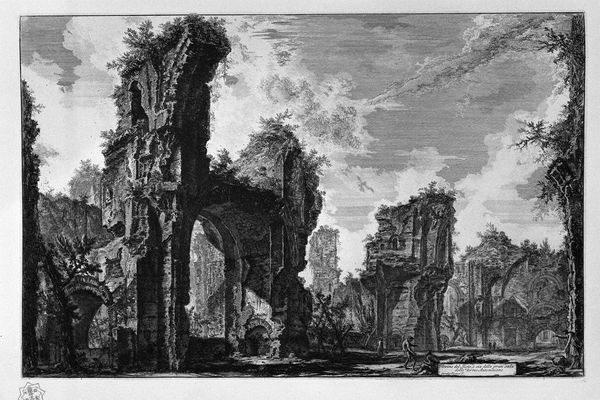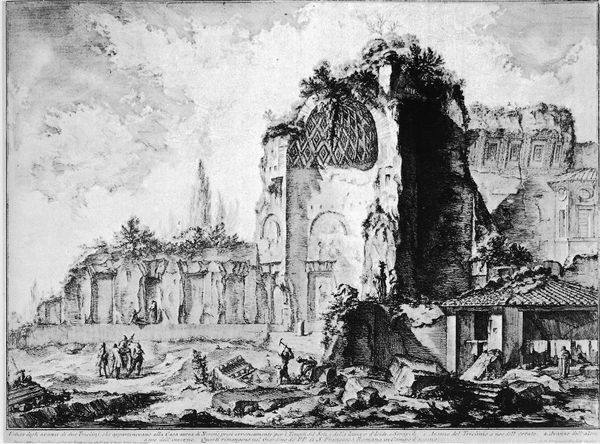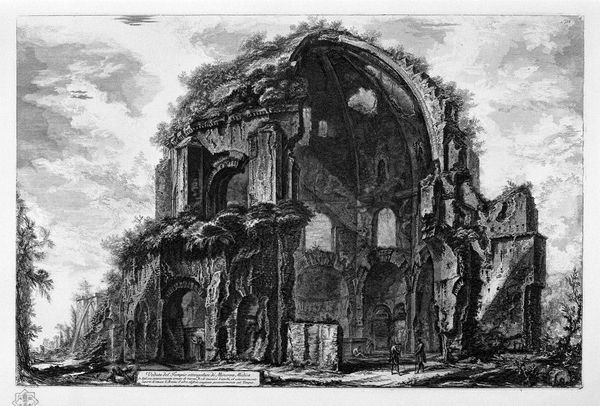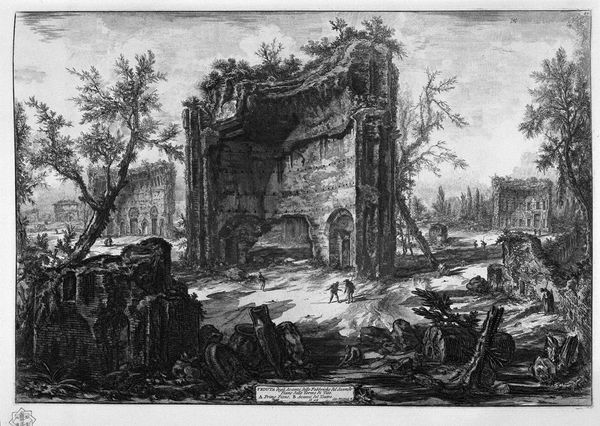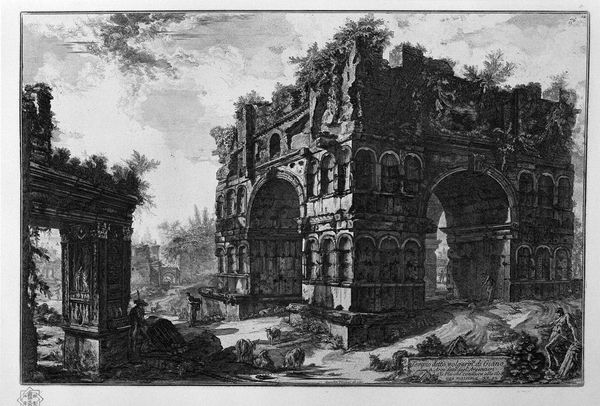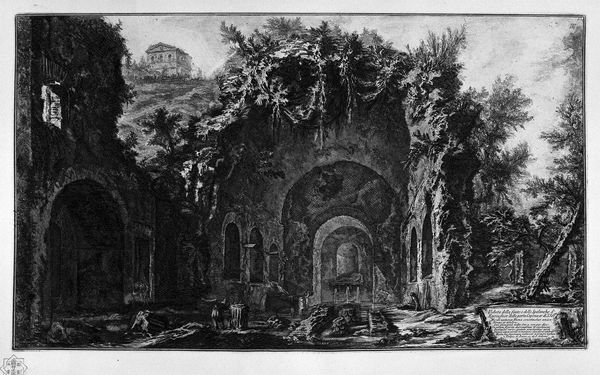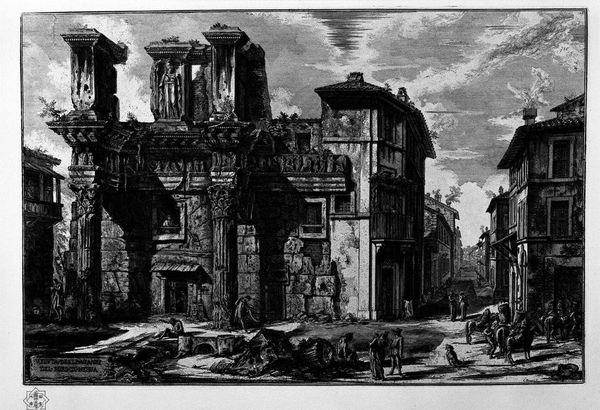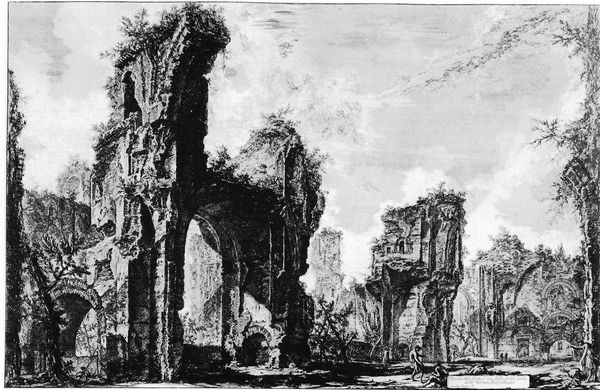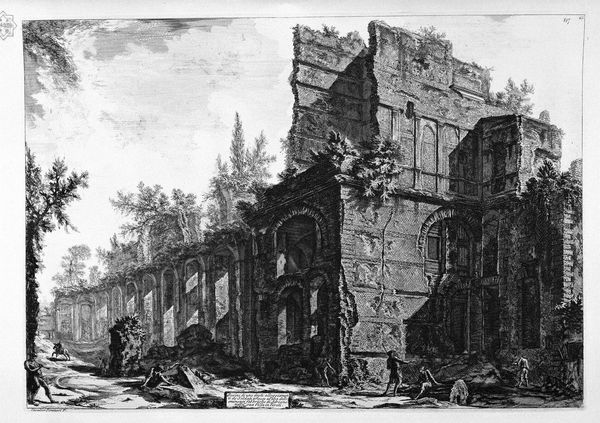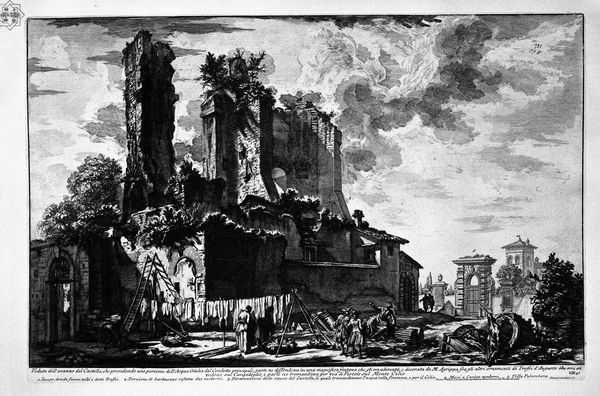
A view of the remains of two Triclinj who belonged to Nero`s Golden House 1759
0:00
0:00
print, etching, photography, architecture
# print
#
etching
#
landscape
#
photography
#
ancient-mediterranean
#
history-painting
#
italian-renaissance
#
architecture
Copyright: Public domain
Curator: What strikes me immediately about this etching is the romantic desolation. Editor: I agree, the visual drama is certainly compelling. This is Giovanni Battista Piranesi’s “A view of the remains of two Triclinj who belonged to Nero`s Golden House," created in 1759. Piranesi masterfully captured not only architectural forms but also their decay. I'm particularly interested in the materials, specifically how Piranesi employed etching to articulate the ruinous condition of Roman architecture. Curator: Right. And looking closely, we can see small figures amidst these gigantic structures. The Golden House, once a symbol of imperial excess, is now in pieces, overgrown with nature. It evokes a feeling of melancholy but also of inevitable decline—a reflection on the transient nature of power. I see reflections of the enlightenment's preoccupation with history. Editor: Absolutely, it also highlights labor. Note the tiny figures painstakingly clearing debris; the consumption and subsequent repurposing of building materials by everyday laborers—highlighting how physical effort shapes the historical narrative. This also underlines a political critique about power imbalances. Curator: Yes, that tension between grandiosity and fragility really underscores Piranesi’s view on civilization itself. The layers of meaning that he has put into this work speaks about what comes to take over previous constructions, which could even talk about how systems are designed. Editor: Considering that the artist captured real, extant architecture—the materials already contained stories that the process and his representation augmented. How was this building constructed and then dismantled? Whose labor and material created it and then unearthed it? Curator: It definitely forces us to contemplate the complex relationships between time, power, and representation. Editor: Precisely, it urges us to see history not as a detached narrative, but as a sequence of human endeavors, labor, and materiality interwoven. It’s been illuminating looking at this piece through those different lenses. Curator: Agreed, it really provides an insightful intersectional approach to understand art's interaction with society.
Comments
No comments
Be the first to comment and join the conversation on the ultimate creative platform.
